2019 kick off..
It’s a common theme for pros to dramatise the very first world pro athlete woes to make solid performances seem more remarkable and inspire the enthusiastic endurance sports fans that they can overcome any obstacles, that anything is possible and that there are, hashtag, no limits. I enjoy being the antithesis to this nonsense and let people know that we all have limits whether that be time constraints, the amount of physical talent, the reality of other responsibilities life throws your way and your personality traits. That’s not to say we aren’t all capable of achieving excellent outcomes within our constraints, just that setting realistic goals and identifying our limits will lead to better outcomes then dillusional ambitions. Plus as an Australian, we don’t really do the Tony Robbins shenanigans.
So yeah, my form had been rather crap since September last year largely due to my asthma, that has been an intermittent source of annoyance my whole life, remaining flared up for a much longer period of time then I’m used to. However ultimately, asthma is simply an inflammatory condition and like someone with an achilles injury who won’t stop running, it was my refusal to take a decent break from training or lower the intensity in training that I’ve always loved that was not letting it settle. When you strip back most problems to their bare core, it’s often our own personal decisions that lead to many of our problems. At least when I reflect on the majority of my own challenges and problems, that’s been typically the case.
Ironman New Zealand
Image- @koruptvision
I cracked open the 2019 race season with Ironman New Zealand. A questionable choice by all those close to me as quite frankly I hadn’t done the work to truly be competitive over an 8hr event and it would have made more sense to chase dollars over the middle distance. However with Ironman Australia as my primary goal for the first half of the season, I had a strong desire to do an Ironman before my ‘A’ race to sort out some persistent issues I was having over the Ironman distance. Those issues to be resolved being cramping, race day nutrition and quad carnage that was killing my marathon. I’m also a big believer in the ‘central governor’ theory based around the premise that we need to expand what our brain considers an acceptable risk to our survival, to truly get the most out of our capabilities on race day. I had strong suspicions of how to resolve the issues I was having and thankfully they’ve seemed to have proven correct so far and I had none of these issues in either Ironman events. Asthma had me breathing through a straw for part of the NZ bike but it was not too debilitating on the run. With a very low risk race strategy in place I had told Monica, who is the only real person who hears my sometimes overly ambitious dribble, that I would go somewhere between 8hr 20- 8hr 30 depending on the conditions and went 8.22 so was very pleased with the outcome even if that was only good enough for 5th place.
I learnt a lot from my own race but also Mike Phillip’s winning performance. I have a lot of respect for all the Kiwi long course triathletes. I’m not sure whether it’s the weather in NZ or the no nonsense down to earth Kiwi culture but they generally appear to be similar in that they’re tough bastards, don’t complain about much and simply get on with the job. Mike was very generous to answer all my questions about his preparation during drug testing. Some of his answers influencing how I prepared for Ironman Australia.
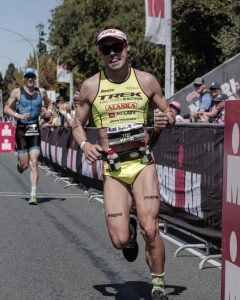 One of the big risks of doing an Ironman so soon after resuming proper training was that it could have a big mental toll which would take away from how deep I could go in Ironman Australia. I was quite convinced that I wouldn’t have the fitness to engage in an ‘Ironwar’ on course and that proved very much the case. Every Ironman is mentally draining, no-one can escape the toll but as I wasn’t going toe to toe with anyone for a podium or having to push through an entire marathon with torn quads like Ironman Oz in 2017 or Kona 2018, that mental cost was limited. Normally when I finish an Ironman all I can think about it all the non-triathlon activities I can do but without the prolonged Ironman build I was super motivated to resume training, and was planning my Ironman Australia build within hours of finishing the race while the lessons learnt were fresh in my mind. In what turned out to be bizarrely accurate, I even told Monica and emailed a coaching advisor that I was confident I would go 8hrs 10 in Ironman Australia, 5 minutes under the previous course record.
One of the big risks of doing an Ironman so soon after resuming proper training was that it could have a big mental toll which would take away from how deep I could go in Ironman Australia. I was quite convinced that I wouldn’t have the fitness to engage in an ‘Ironwar’ on course and that proved very much the case. Every Ironman is mentally draining, no-one can escape the toll but as I wasn’t going toe to toe with anyone for a podium or having to push through an entire marathon with torn quads like Ironman Oz in 2017 or Kona 2018, that mental cost was limited. Normally when I finish an Ironman all I can think about it all the non-triathlon activities I can do but without the prolonged Ironman build I was super motivated to resume training, and was planning my Ironman Australia build within hours of finishing the race while the lessons learnt were fresh in my mind. In what turned out to be bizarrely accurate, I even told Monica and emailed a coaching advisor that I was confident I would go 8hrs 10 in Ironman Australia, 5 minutes under the previous course record.
NZ finish- @koruptvision
Ironman 70.3 Davao
After an awesome week of chilling in New Zealand with the family I had Ironman 70.3 Davao in the Phillipines 2 weeks later. I actually felt pretty sprightly one week after Ironman New Zealand and then terrible two weeks after. An important lesson for what would became a post Ironman Oz gamble with Ironman 70.3 Vietnam. I suspect two to three weeks after an Ironman it’s a combination of the fatigue still very much in the body from the Ironman but also a loss in fitness due to several weeks of reduced training with the taper and then post Ironman recovery weeks to shake the fatigue while 7-10 days post race the muscle fatigue is high but fitness is still strong. I returned to Ironman 70.3 Davao and really struggled despite an awesome race atmosphere that Philippines events are becoming famous. The passionate crowds were unable to kick my body into gear. I guess you have to pay the price of an Ironman effort at some stage but I was still very disappointed given Alaska Milk in the Philippines have been such an important sponsor of mine the past few years and I love battling out races with friends like Tim Berkel and Craig (Crowie) Alexander. Markis Rolli took it up the road and held on for a stellar win, Crowie was strong all day for 2nd and Berks raced well despite being a little fatigued with training for Ironman South Africa finishing 3rd. I was 4th but way back pretty frustrated with a body that just wouldn’t go fast enough to even be slightly involved with the race up front.
Images- @asiatrilive / @marv.sportsphotog
IM 70.3 Oceanside DNS
As is typical post racing and travel I got to Boulder in the U.S to race the iconic Ironman 70.3 California in Oceanside and my asthma was very angry with me not allowing me to train with any quality and I was struggling to sleep through the endless coughing. I’m a gambler at heart and rarely pull out of starting races even when sick. However it’s never once worked out for me and I finally had the maturity to pull out of Oceanside. I didn’t feel I had raced near my potential since September and finally accepted I had to change my approach and get fully healthy or this asthmatic cycle would continue and Ironman Oz, the major target of the first half of this year would be a failed mission.
I needed a training camp not necessarily to do the extra training but to get the much needed recovery time between sessions that I simply don’t get parenting at home. I took advice from Crowie and eliminated intensity from my training for the first 10 days I was in Boulder. I also had an appointment with Joanna Zeiger, Olympian, Ironman 70.3 World Champ, coach, author, asthmatic and much more who really opened my eyes to changing the way I breathe and the importance of not letting the inflammation build up. It was interesting to reflect on how all my good races had come with a reasonably degree of humidity. I realised I would have to be a little smarter with the races I chose to focus on. Even more interesting to realise how completely rubbish I was at breathing properly and the way my body had been compensating for this.
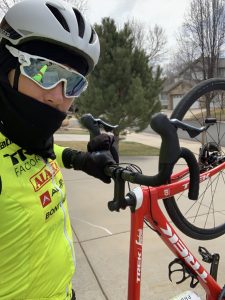 I spent the next few weeks training in Boulder hanging with my beloved U.S family, Warren and Pam Shuckies who reduce my homesickness to a bearable level so I can last the training camp distance and get the job done. By the time I left Boulder, I was breathing better than I had in a long time and my fitness, particularly my aerobic endurance and efficiency was very strong. Perhaps the altitude plays a role, but I’ve always come out of any training camp, even at sea level, in far superior form to starting out so I believe it’s more the ‘camp effect’ and the fact Boulder has such incredible bike riding that I enjoy every second of the 5-6 hour bike rides.
I spent the next few weeks training in Boulder hanging with my beloved U.S family, Warren and Pam Shuckies who reduce my homesickness to a bearable level so I can last the training camp distance and get the job done. By the time I left Boulder, I was breathing better than I had in a long time and my fitness, particularly my aerobic endurance and efficiency was very strong. Perhaps the altitude plays a role, but I’ve always come out of any training camp, even at sea level, in far superior form to starting out so I believe it’s more the ‘camp effect’ and the fact Boulder has such incredible bike riding that I enjoy every second of the 5-6 hour bike rides. 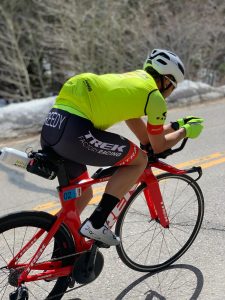
The ‘balance’ fallacy..
It was a relief to get back to Monica and the kids for the final run into Ironman Australia however I’m not sure they would have been loving having me back given the way I was acting. I was uptight, on edge and straight up selfish. Despite hating the way I was behaving I struggled to reign it back as I was so nervous about getting sick and or asthmatic again and ruining the good racing form I knew I was in. The self induced building pressure of feeling like I wasn’t racing to my potential over the 8hr format (or even 70.3 events of late) of the sport had me displaying characteristics of some very successful pro triathletes that I detest. The characteristics, not the athletes. I was obsessive about diet, sleep, recovery and getting my training in and everyone in the family was paying the price for my temporary neurotic ways.
While pro athletes like to put out there that balance is essential to success in sport I would argue that their perception of balance is highly warped and it would be very difficult to be in the top percent of any sport if your life was genuinely well balanced. As a parent and pro athlete I have to accept this conundrum and find a solution or change occupations. I love racing and don’t necessarily want to reduce the amount of races I do but at the same time I can’t put the family through my periods of intense athletic focus too often so I try and settle on being a total self absorbed tool for two training builds a year and the rest of year accept that a better degree of balance will likely reduce my level of performance but keep the rest of my life from not going off the rails and in turn make me and my family a lot happier.
Ironman Australia
All images- @koruptvision
Of the contenders for the title Cam Wurf was the obvious favourite after a bike course record and top 10 at the World Championships in addition to a continual consistent improvement across all three disciplines. Cam had been doing some rather hectic work on his running consistently knocking out 100km run weeks on top of a some pretty epic swim and bike sessions. Cam would say he did a lot less riding and swimming which is true but that’s compared to Cam standards. Still a lot more than most other pros are able to get through. Cam has the uncanny ability, similar at least from what is reported, to both Jan Frodeno and Lionel Sanders to get through a huge amount of volume and intensity while still absorbing and adapting while many of the rest of us would be buried by the physical workload even if our brains were willing. The other bloke that didn’t get quite as much attention but I was well aware of was Denis Chevrot from France who doesn’t really seem to have a weakness and could definitely produce a winning performance.
The buzz the morning of the race was awesome. Some races you can really feel it. Unlike the days leading in where I’m nervous as hell, I didn’t feel any nerves the morning of the race, only pure excitement to see how far I could push the mind and body.
The swim is a tricky one to navigate on your own as I found out in 2016 and it seemed that the majority of the pro field assembled were all superior swimmers to me. Staying with the group was going to be crucial to a fast swim and getting dropped at the first buoy turn was not in the pre race plan but Denis and I found ourselves in that situation. I had to bury myself early in the swim to chase the group and get back on, again, not what I really wanted given every sprint surge you do over this distance comes back to bite you later in the race. We managed to get back in contact and the energy saved for the speed gained over 3.8kms likely make the sprint effort very worth it.
I had two predominant race strategies in mind. If Cam was with us out of the swim, I knew I was going to have to sacrifice some time off my run and simply ride harder as there was a good chance he could have an embarrassingly large gap off the bike similar to Starky’s gap in Ironman New Zealand if I didn’t. If Cam wasn’t with us I would just ride a relatively steady effort until I knew where he was and what the likely scenario was starting the run. My thought process was that given the draining nature of the bike course, combined with the predicted wind on race day that run times would not be super fast and that if I could get off the bike within 8-10 minutes to Cam I would have a chance for the win provided he blew up in the back half of the marathon and I didn’t. Not the most proactive strategy but one that has proven quite effective in Ironman racing over the past several decades. Most importantly for me though was not winning the race but laying down an Ironman performance that I was proud of and knew represented the amount of work and sacrifices both my family and I had put into that race.
Despite a 4+ minute deficit out of the swim, it was obvious all Cam’s run milage hadn’t hurt his bike riding in the slightest as he went flying past us on the return portion of the first lap. The speed he went past was insane and I figured that was simply to ensure the gap was established as that power could not be sustained and still leave legs ok for running. Mark Bowstead made the interesting decision to try and ride with Cam which lasted a short while before Cam decided to unleash a little more fury leaving Mark reeling from the effort and quickly left Cam on his own to start accumulating time on the field. The gap didn’t build at a crazy rate so I committed to sticking to my set power and banking on the run based off the splits and the time left to ride.
Off the bike and onto the run Cam was 8.5 minutes up the road, Mark 40 seconds up and Denis and Clayton Fettel with me. I had mentally rehearsed shutting my brain down into hibernation during some of my really tough brick sessions in Boulder and found a calm, neutral mental space straight away where internal voices of common sense couldn’t pester me. I didn’t panic about the gap to Cam, settled into pace that I felt would not necessarily make up any time on Cam in the first 15kms but after that would allow me to run well and start bringing him back from there.
Below- Ironman warm up. Ironkids with Big Artie
I don’t think there is a portion of the run course that is not lined with very vocal supporters. A marathon after 180kms of cycling is always going to be a painful experience but having that much support on course makes it a strangely very enjoyable painful experience. At 10kms the gap remained exactly the same to Cam and I had put a little time into Denis. 15kms the gap to Cam was still the same. At this point I was not surprised at all. Cam had out run Tim Don at the Cannes Triathlon a few weeks prior so I knew he was running well over shorter distances. 21kms in, still the gap remained the same and I was starting to get a little bit more perplexed given the pace we were holding was very solid. I settled into the war of attrition, knowing that anything can happen in the final 10kms and then had a bad patch, more in terms of how I was feeling but not so much with my pace dropping too badly, from about 22kms through to about 28kms. In the past I would have put up the white flag but Ironman experience has now taught me to hang in there fighting for each kilometre because things can definitely turn around. The kilometres didn’t feel as difficult after that point, perhaps simply because I was getting closer to the finish and finally I was starting to see the gap to Cam slowly coming down. Small gains but at least it was something. With only 8kms to go he still had a 6 minute gap but I pressed on regardless, eliminating thoughts of what the gap to Cam was doing and was simply just excited that I was running better than I had in the final portion of an Ironman marathon.
In almost exactly the same place that I had lost several minutes off my lead to Dave Dellow in 2017 when I couldn’t’ stop cramping, Cam pulled up stationary and started emptying the contents of his stomach for the live coverage that was beamed around the world. I was soon getting excited reports from runners coming my way that Cam was walking and did everything I could to try and hang onto a decent pace without bringing on my cramp demons. The minutes came down quickly but Cam, gathered himself and finished off the job in a cracking course record time of 8:06:17. I came across the line absolutely stoked with my best Ironman performance to date in 8:09:50 and gaining qualification to the Ironman World Champs in Kona.
Some were surprised at how happy I was at the finish given it was a second place finish. While victories are awesome my primary analysis is based off the objective data and I can’t control other people’s performances. My performance was my best to date over this distance, nearly 7 minutes quicker than when I won in 2016 on an easier day so of course I was ecstatic. I was also very happy for Cam. I’ve witnessed his total and absolute dedication to improving in this sport. To be perfectly honest, it’s not a level of dedication I can emulate too often to given the phase of my life and four more important priorities but it’s been seriously impressive and motivating to witness. It doesn’t always happen but it’s fitting when the guy who has worked the hardest gets the most rewarded as is proving to be the case with Cam’s rapid rise towards the top. The affable Frenchman, Denis Chevrot, rounded out the podium with a 2.50 marathon and 8.16:00.
I’m really pleased to see a shift amongst both age group participants, pros and the powers at Ironman in recognising that tough Ironman courses provide fair races and overall a more fulfilling experience. If you’re in Ironman racing to truly test yourself or find out where you genuinely stack up in your age group while experiencing a race with an atmosphere that is really only rivalled in my experience with races like IM 70.3 Philippines then Ironman Australia is a race you should be looking at for 2020.
Ironman 70.3 Vietnam- Asia Pacific Championships
I had booked flexible fares to Vietnam on the chance Ironman Australia ended up being a terrible performance or the small chance that my legs and brain would feel up to racing 7 days post Ironman. Based off the awareness that I could do things I couldn’t’ normally do after an Ironman, like walk and sit down to go to the toilet without my quads screaming at me in protest, I made the decision on Tuesday I was going to roll the dice and race. I love Vietnam and the event organisers always do a fantastic job of making it a spectacular event. I also figured that with the large pro field that was assembling to contest the Asia Pac Championship, even if I couldn’t’ hang with them in the race there were a lot guys I liked hanging out with outside of racing.
I set about establishing expectations amongst the male pro field that I was going to run terribly reminding most who would listen that last time I raced a week after an Ironman, I blew to smithereens and was barely jogging in the final 10kms. I knew that I was going to need a lead off the bike to have any chance of a top finish and that establishing low expectations for my run would greatly increase my chance of being able to get away on the fast bike course as guys would be less willing to close the gap and drag better runners with them.
I didn’t feel great in the swim but still made the front group without too much stress. Onto the bike, I was surprised at how easy I found it to move to the front of the pack and close the small gap to Patrick Lange who was leading the early stages of the bike ride. As the current Ironman World Champion and being his first race of the year, there was no way Patrick would have given anything less than 100% to the build up to this race so I knew he was probably the main man to watch. Aerobically I felt great and the ache in my legs was manageable. The second major attempt to get clear of the guys was mildly successful gaining a few hundred metres on the group but was eventually brought back by Mike Phillips and the group with him. Mike had raced a week prior in Busselton showing that his bike was on song was going to be very tough to get away from.
With about 22kms to go I hit the climb up the bridge for a sustained effort of around 6.5w/kg (little guys always talk in watts per kg instead of absolute numbers) and went hard down the other side, relieved to look back and see I had some breathing space. I later found out Mike and Terenzo both decided to chase at one point or another but with the field not letting them go and everyone saving precious watts with the permitted 10m gap between bikes for the very hot run ahead, decided it wasn’t in their interest to help so many fast athletes and threw me a bone to chew on to see if I could get through it. Sometimes it pays to have friends in the group.
Image- @asiatrilive/@marv.sportsphotog
I got off the bike in 2:04 a little off my bike course record from 2015 which I only mention because my ego hates being pigeonholed as just a fast runner. I had a 2.5 minute lead on the chase group and decided to use the lead as an opportunity to run the first half easy and protect the legs to try and make it through the 2nd half of the run still able to move. Even leading at 8kms I still believed my best hopes were maybe a 5-8th place given my quads were already giving me hell and given the quality field. Hey, given the circumstances I was pretty happy with that prospect and braced myself to dig as deep as I could over the final 10kms to try and secure that 5-8th. The boys were flying behind with Berkel first to catch me around 10kms in, Patrick soon to follow and Crowie also within 20 metres of making the pass. At the turn around, I stuck to the negotiated agreement with my brain and locked into suffering more than I ever have before and moved as fast my legs would take me from aid station to aid station. The thought of running beyond the next aid station was not something my brain could contemplate so I made the goals mentally manageable.
Thankfully, the easier 10km and my pre race PREPD hydration protocol seemed to start paying huge dividends as many of the guys behind had dropped off and apart from the pain in my legs, the Vietnam heat and humidity was not bothering me at all. I wasn’t the only athlete to race a week prior and I think Crowie, Mike Philips and others were all really feeling it in the back half of the run.
Patrick ripped through the run to take the win in clinical domination, Tim Berkel had an awesome race showing just how good he is, particularly in the heat to take 2nd and somehow I had bluffed my way into 3rd place, frankly very shocked with how well my gamble had paid off. Image- @IronmanAsia
Huge shout out to the team behind this race they did such a great job in hosting a championship event. In particular, it’s been really cool to watch the massive increase of popularity of triathlon in Vietnam.
Schedule..
From here, next stop is back to the Philippines for IM 70.3 Subic Bay. I return to Australia for a leisurely 24 hours to pick up the family then we all fly to the U.S for American summer hitting IM 70.3 CDA, IM 70.3 Santa Rosa before everyone’s favourite race, IM 70.3 Philippines in Cebu!
Thank you
My amazing wife Monica and our extended families for all helping out when I’m away.
To Evan Gallagher for keeping the ship sailing.
To my sponsors for their unwavering support:
Trek
Bontrager
Alaska Milk
Allen Sports
Santini
Oakley
Flight Centre Sports and Events
PREPD
Roka
Budgy Smuggler
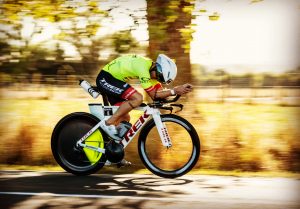
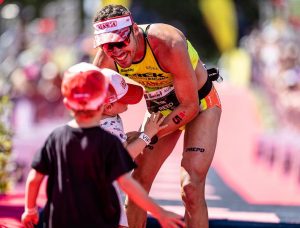
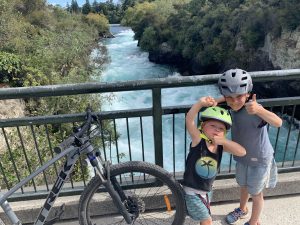
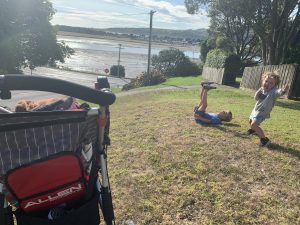
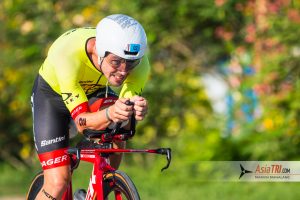
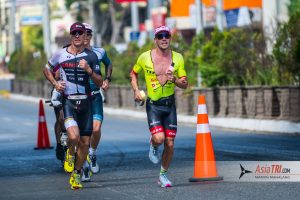

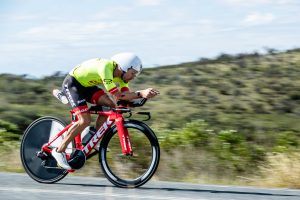
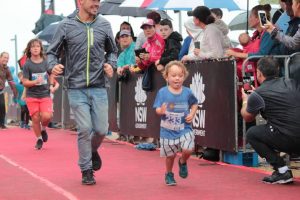

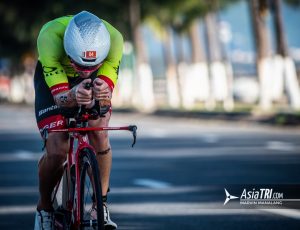
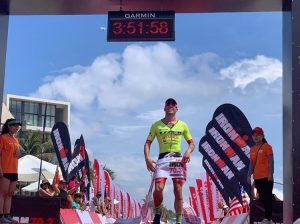
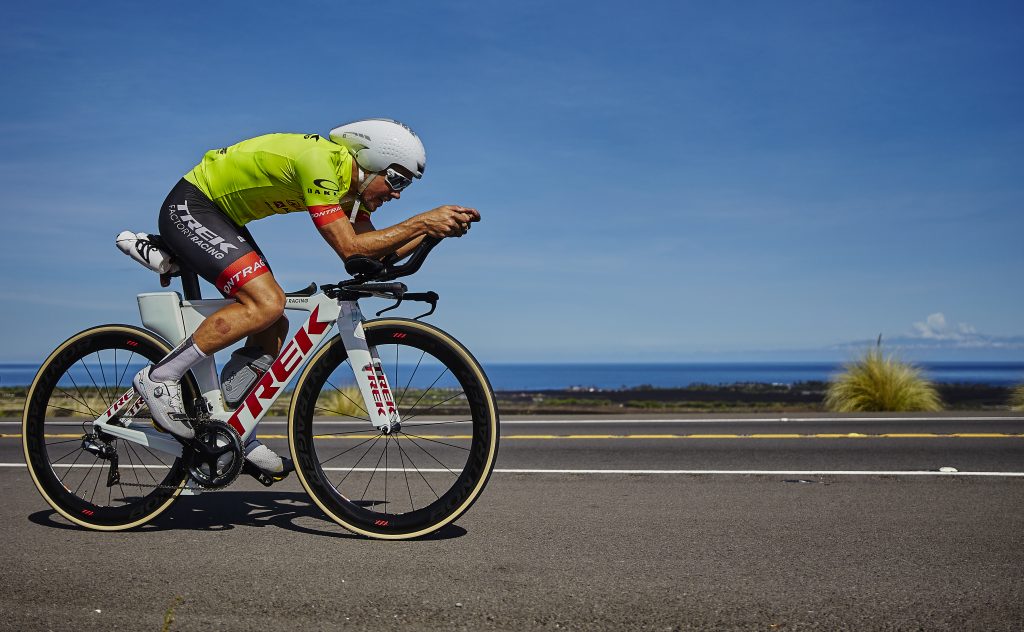
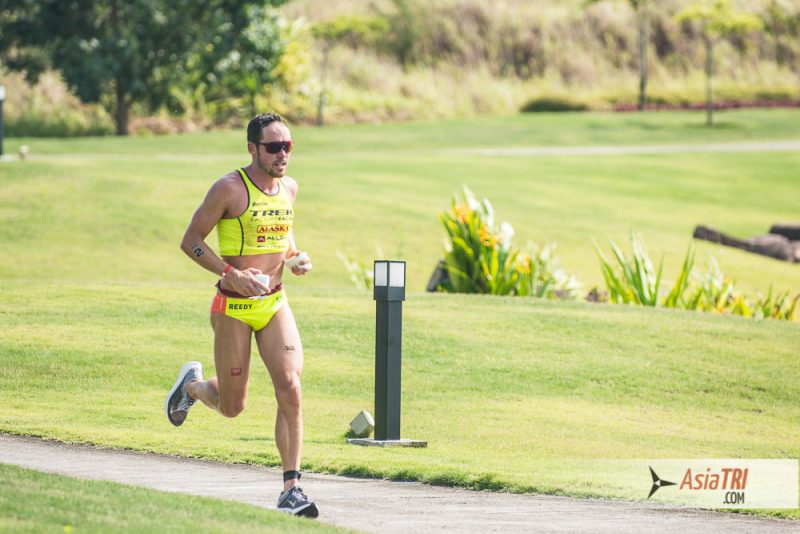
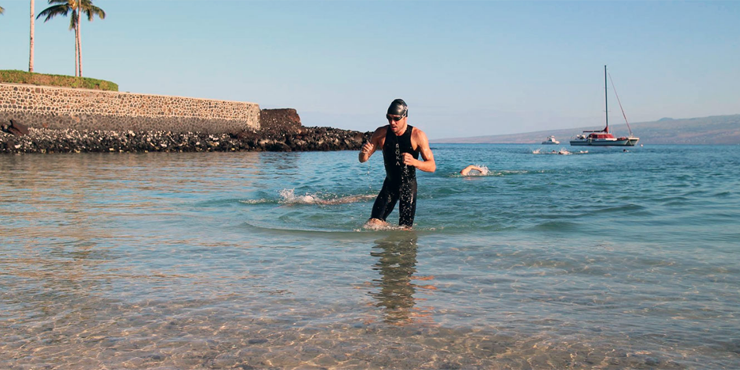
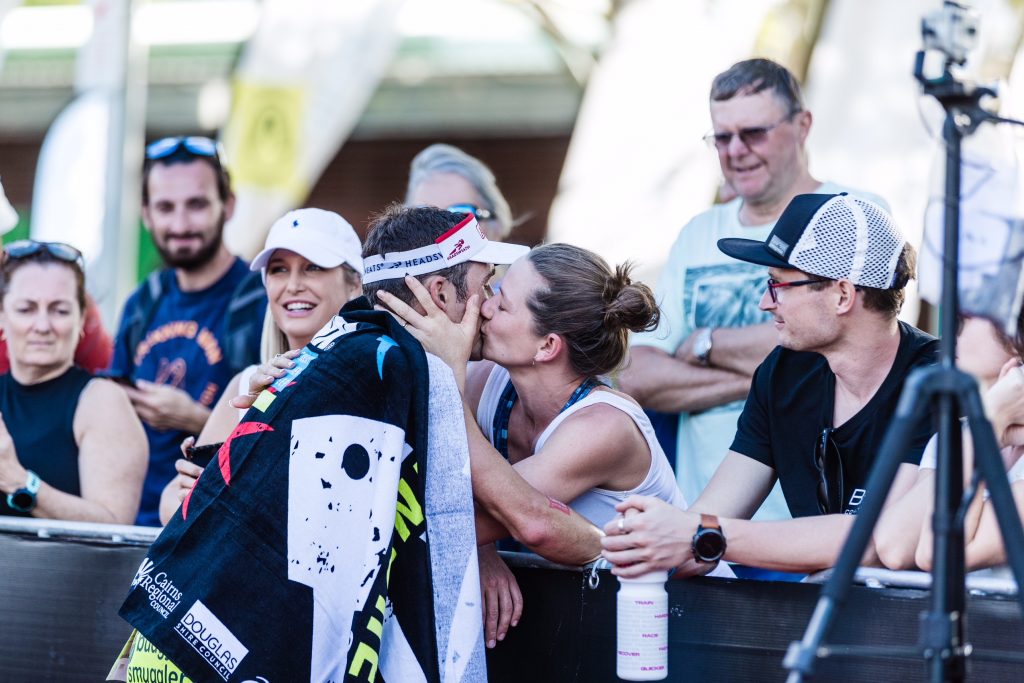

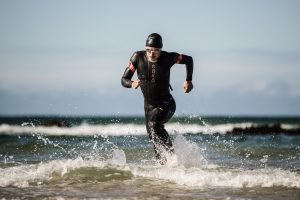
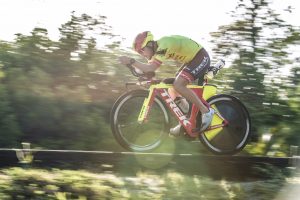
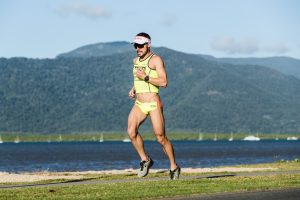
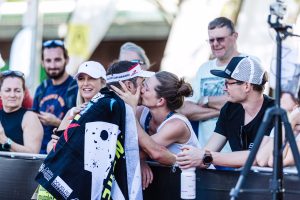
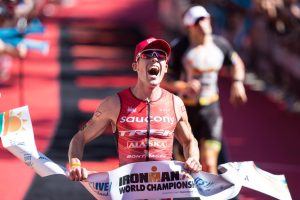
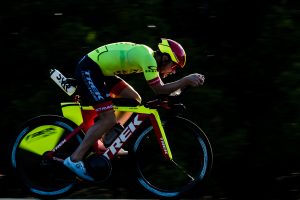
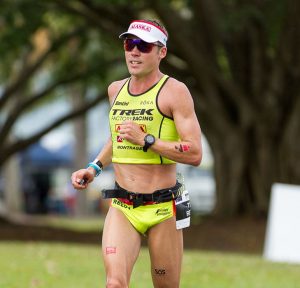

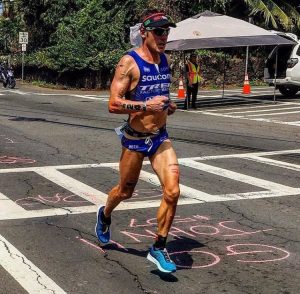
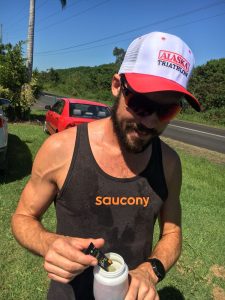
 Please contact:
Please contact: